How to choose snowshoes: stay afloat in all conditions and terrain
Knowing how to choose snowshoes is more complicated than just knowing your shoe size – we break it all down to keep you from sinking into the deep stuff
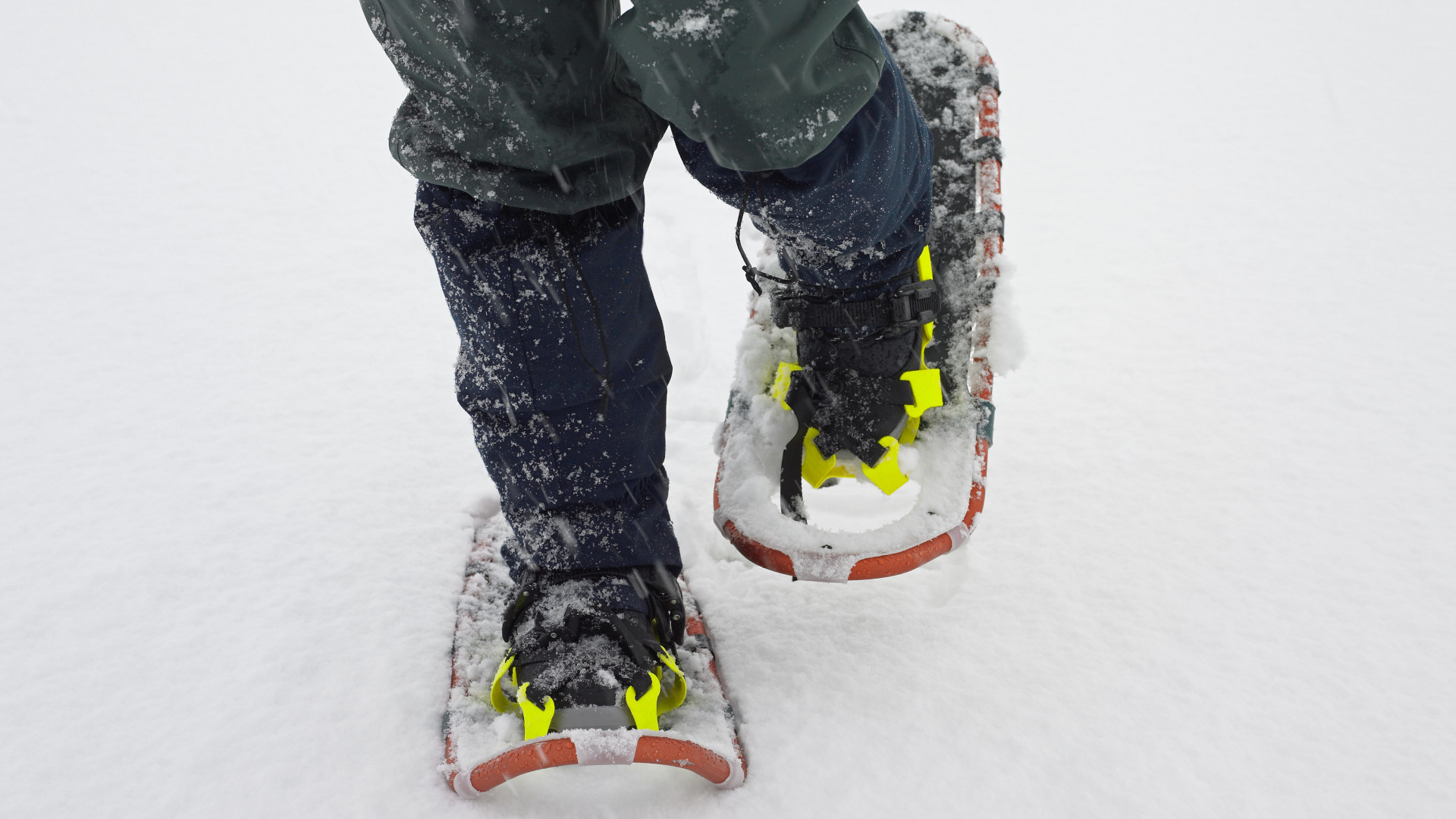
If you’re planning on keeping your hiking season going year-round this winter, there’s no piece of gear you’ll want more than a good pair of snowshoes. Snowshoeing is a bit like having an all-access pass to the backcountry in winter and choosing the right pair of snowshoes can make or break your experience. As it turns out, understanding how to choose snowshoes is more complicated than just knowing your shoe size, so we’re here to break it all down and keep you from sinking into the deep stuff this cold season.
What are snowshoes?
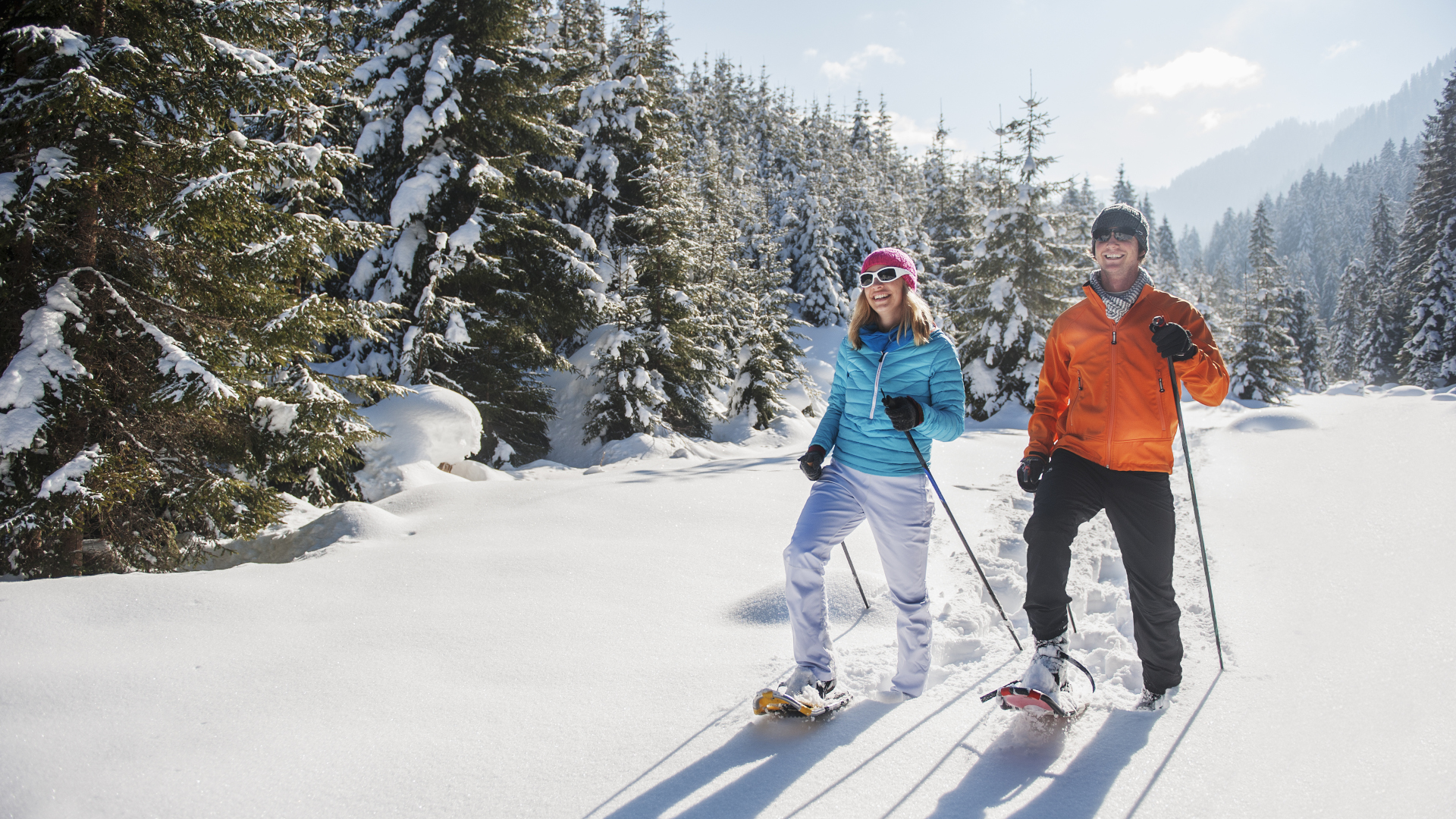
Snowshoes are a type of footwear that you attach to your feet over your hiking boots that keep you from ‘postholing’ AKA sinking thigh-deep into the snow when you’re hiking.
Snowshoes have a wide shape that resembles a tennis racquet and provides flotation to stop you from sinking into the snow. They feature a binding, which fastens your hiking boot to the snowshoe. The binding is really important – you want a secure binding that is easy to get in and out of. Think: pulling one tab to adjust the snowshoe to your foot rather than spending five minutes fumbling around with it in the freezing cold. On the underside of the snowshoe, there’s a crampon to help you dig into the snow, and sometimes a heel lift, depending on the type of terrain you plan to use them for.
- Aluminium-framed snowshoes are more traditional and have a netting that can be made from a variety of materials such as nylon. These are usually lightweight and strong.
- Composite snowshoes, where the frame and flotation area are all made from the same hard material, can be a little noisier to hike in.
- EVA foam snowshoes are a more recent innovation which are super quiet, warm and moveable but don’t provide as much traction and are probably better suited for casual use.
How do you know what size snowshoes to buy?
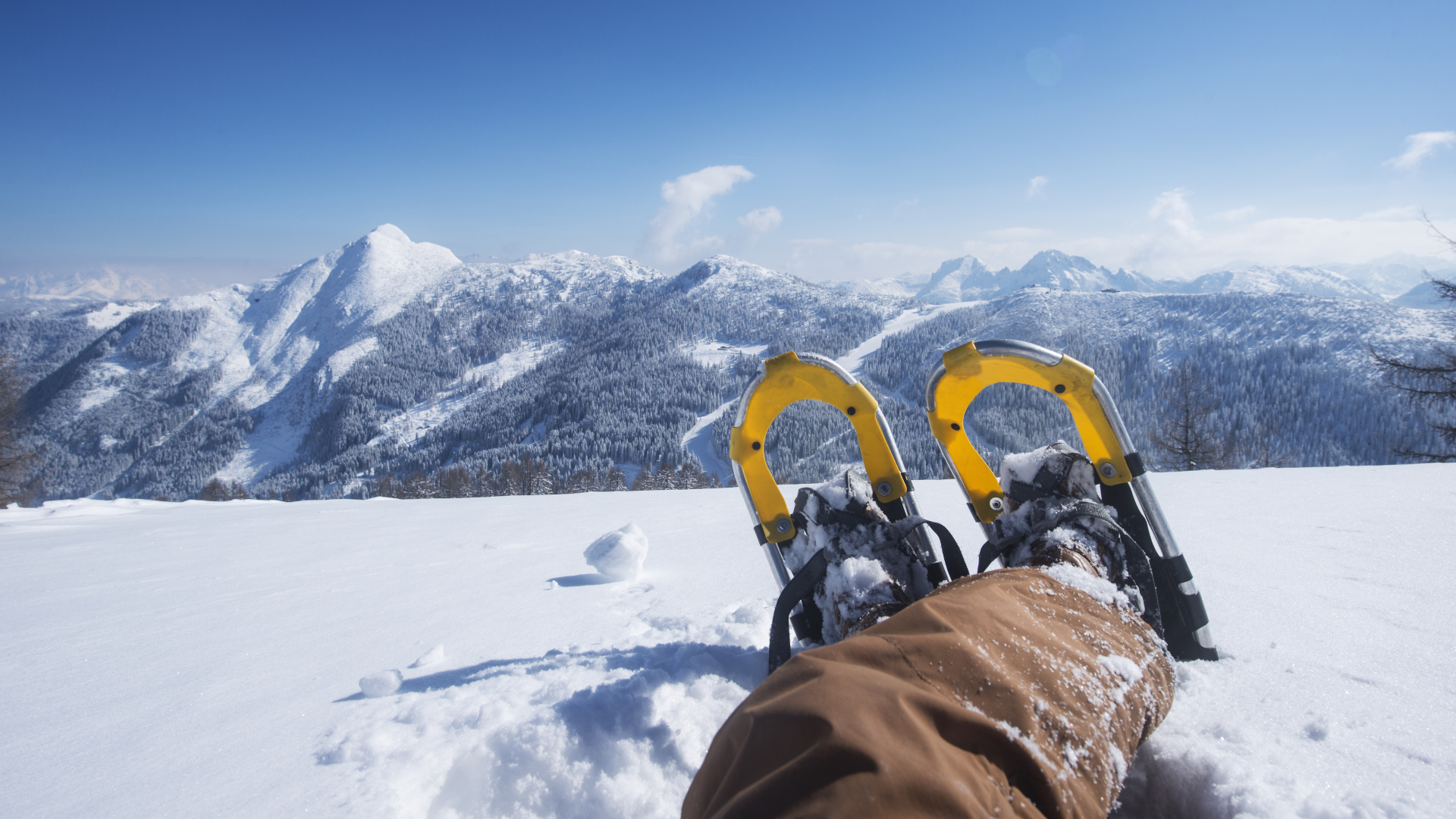
The first, and most obvious question is what size of snowshoes you should buy. However, according to Pete Petrovski, Senior Manager of Adult Ski School in Beaver Creek, Colorado who oversees Nordic and Snowshoe operations, it's more complicated than just knowing your shoe size.
"Snowshoes are weight and height dependent, as well as ability. There are racing/trail running options that are lighter weight and allow for more speed, or a more traditional snowshoe for a stroll on the mountain," said Petrovski.
Rather than correlating to shoe sizes, snowshoes are sized by their overall length, usually measured in inches, or they might just come in a standard small/medium/large type measurement.
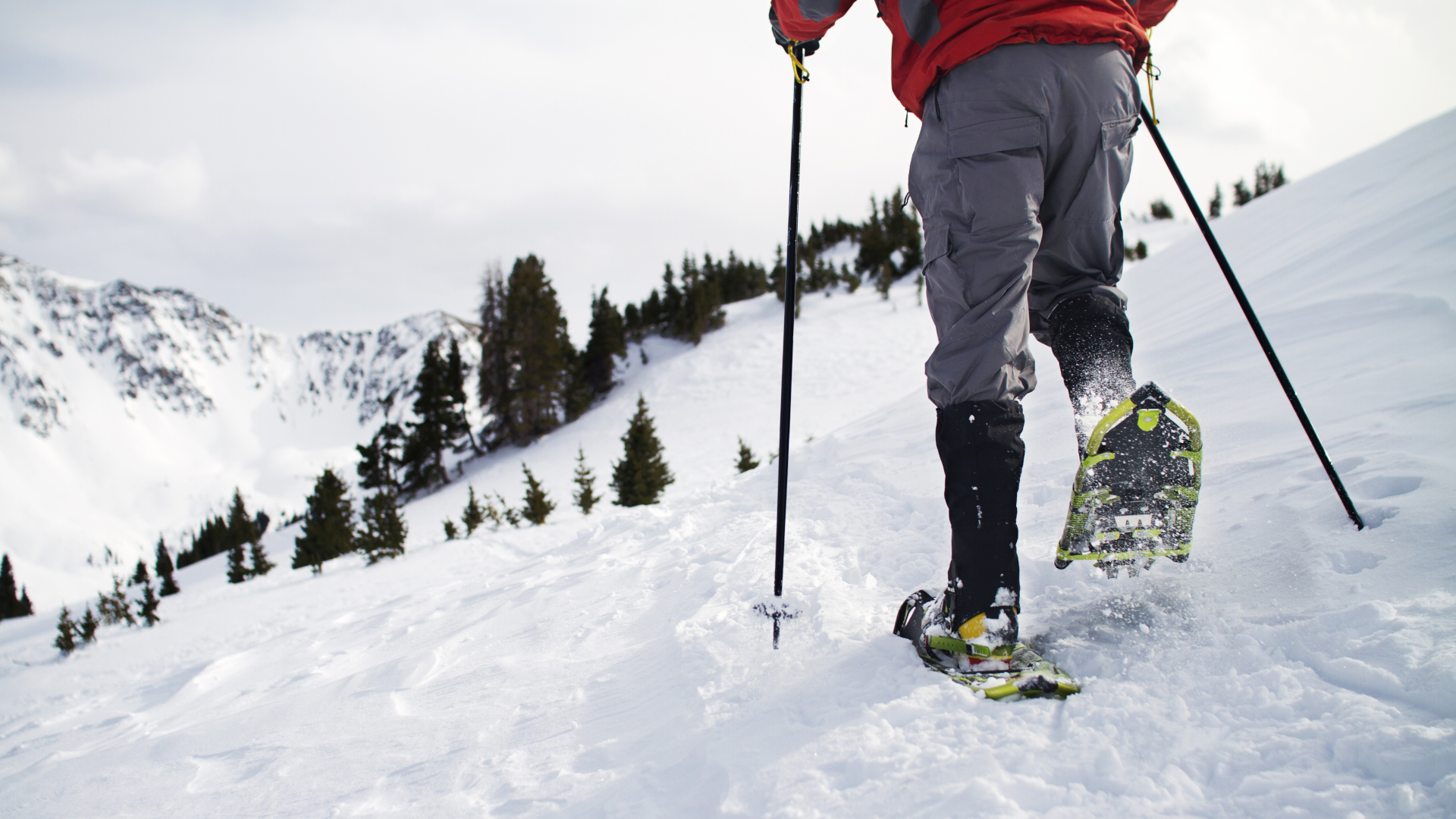
Like cross country skis, snowshoes fit more by your body weight rather than foot size, so you’ll want to consider your weight plus any gear you’re likely to be carrying on your adventures. Check the recommended weight capacity for the snowshoe and go with that length. If you’re a little heavier than the recommended weight, it won’t necessarily damage the snowshoe, but you’ll sink farther, which does defeat the purpose a bit.
Advnture Newsletter
All the latest inspiration, tips and guides to help you plan your next Advnture!
Another good thing to know is that women’s models are usually about 3/4" narrower than men’s to accommodate for a narrower boot.
Finally, a good rule of thumb is to pick the smallest pair within the range that holds your weight, since that means you'll have less weight to carry on your feet.
What type of terrain will you be snowshoeing on?
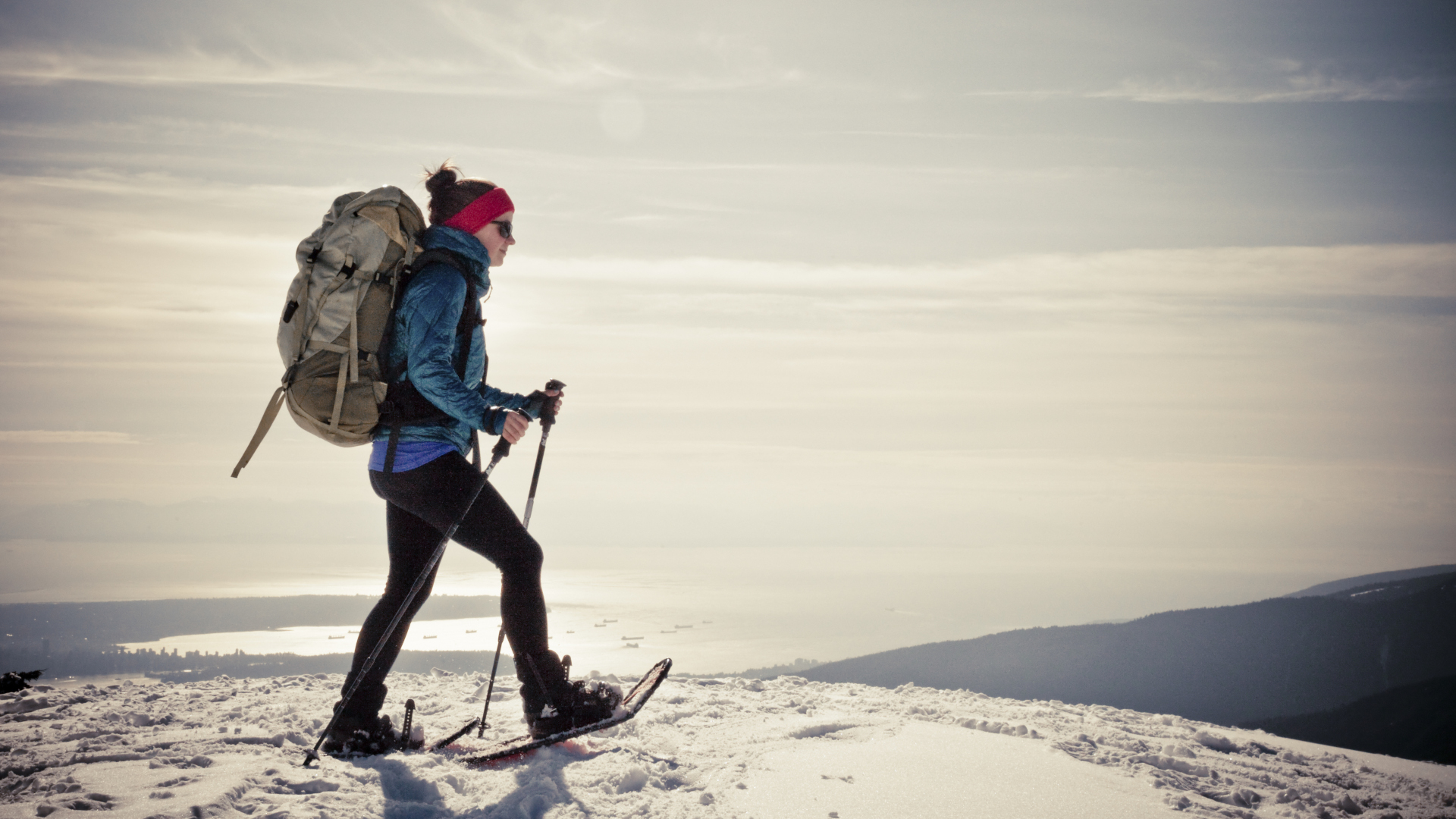
In addition to weight, you’ll want to consider the type of terrain you’ll likely be snowshoeing on: flat, rolling or steep hills.
Snowshoes meant for flat terrain will have simple bindings that assume your foot won’t easily slide out and only require tightening once at the beginning of your hike. Fixed bindings attach the entire length of your shoe to the snowshoe and are best for flat terrain. Flat terrain snowshoes will also have a simple crampon intended for a modest bite into the snow and no heel lift.
If you’re planning to snowshoe on rolling terrain however, you’ll want a pair that feature a more technical binding that is easy to adjust since you may have to adjust it when you change between uphill and downhill. Rotating, or floating, bindings are better for both rolling and steep terrain as they allow more movement. Rolling terrain snowshoes will feature a more aggressive crampon and a modest heel lift to help boost you up the inclines.
Finally, if you’re heading up a steep slope, you’ll want snowshoes with a highly technical binding that is easily adjustable, an aggressive crampon that bites deeply into the snow to keep you from sliding downhill and a higher heel lift to compensate for the grade beneath your feet.
| Header Cell - Column 0 | Flat terrain | Rolling terrain | Steep terrain |
|---|---|---|---|
| Bindings | Simple, fixed bindings | Rotating (floating) bindings that allow for more movement and are easy to adjust | Rotating (floating) bindings that allow for more movement and are easy to adjust |
| Crampon | Modest | Moderate | Aggressive |
| Heel lift | None | Moderate | Highest |
If you anticipate snowshoeing on varied terrain, either pick snowshoes for rolling terrain that you can probably use on flat or steep ground, or pick the style that is best suited for the terrain you’ll be traversing the majority of the time. If you only plan to snowshoe on steep stuff once a winter, you can rent a pair for that occasion.
What kind of snow will you be snowshoeing on?

Finally, if you’re getting into winter sports, you may already know that not all snow is created equally. East coast snow is typically heavy, wet and icy for example, whereas high altitude zones like Colorado and Utah are famous for their light, dry powdery snow.
A bit like backcountry skis, the larger the surface area of the snowshoe, the better flotation you’ll have, so if you’re snowshoeing in deep, soft, powdery snow, you’ll want a bigger snowshoe to provide more flotation. If you’re going to be in the heavier, wet stuff or packed down snow, you can go with a smaller, more compact snowshoe. Again, you’ll want to pick the snowshoe that covers the snow you’ll most often be hiking on.
If you’re more likely to be hiking on ice than snow, consider using Yaktrax or Microspikes instead.
Once you’ve picked out the best pair of snowshoes for you, check out our guide to cold weather hiking to make sure you’re dressed appropriately and have all the gear you need for a good time.
Julia Clarke is a staff writer for Advnture.com and the author of the book Restorative Yoga for Beginners. She loves to explore mountains on foot, bike, skis and belay and then recover on the the yoga mat. Julia graduated with a degree in journalism in 2004 and spent eight years working as a radio presenter in Kansas City, Vermont, Boston and New York City before discovering the joys of the Rocky Mountains. She then detoured west to Colorado and enjoyed 11 years teaching yoga in Vail before returning to her hometown of Glasgow, Scotland in 2020 to focus on family and writing.

